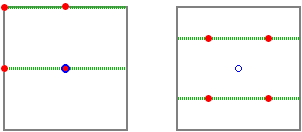_xxx_ said:DiGuru said:_xxx_ said:AFAIK, SSAA (if truly implemented in hardware and not just a driver hack) will always work. You render the image 4 times for 4xSSAA _completely_ and sample than, right? So in which case should it not be working?
Four times, or just once, but twice the resolution on both axis?
The question remains: in which case is SSAA incompatible to anything? The blending happens _after_ the whole image is rendered (be it 4 frames or double the res). Right?
As long as it is well done it will never be incompatible. But there are some render technics that will let you pay for SSAA but you will not see it. But there is the same problem with MSAA. I am sure you remeber als the games that can not use AA and postfilter effects at the same time.



